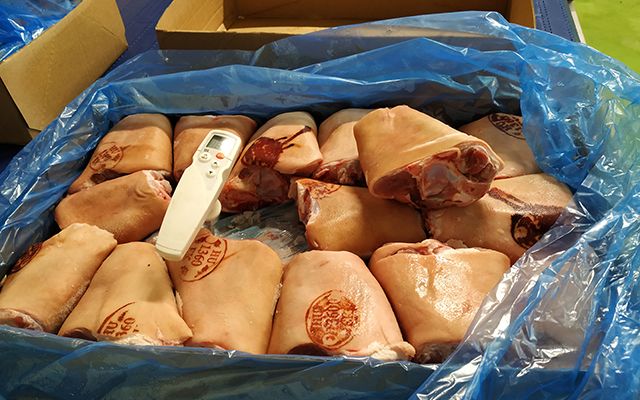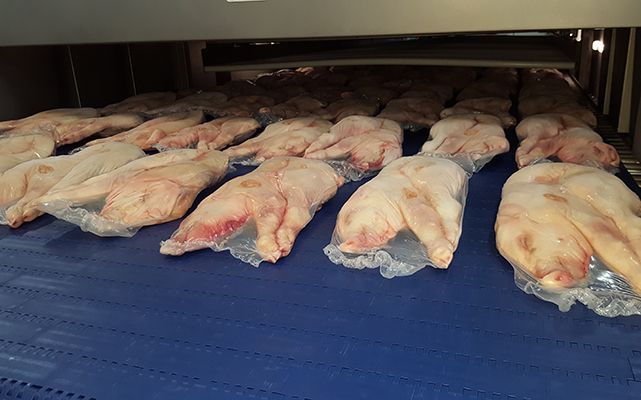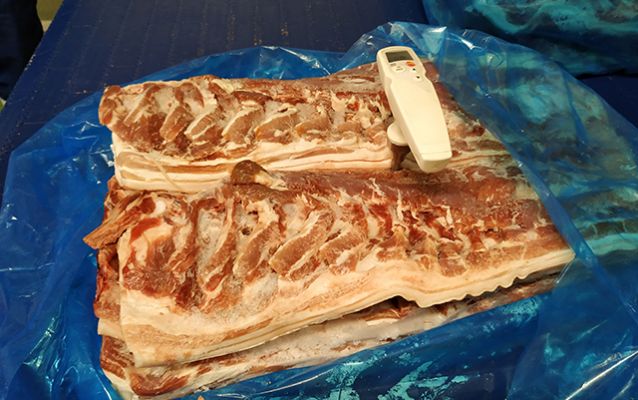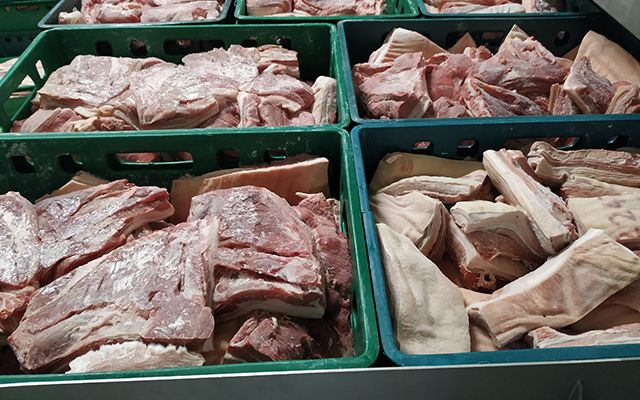



The choice, implementation and monitoring of freezing and defrosting methods are of paramount importance in the quality control of raw food materials and processed products.
Nevertheless, the defrosting process of irregular product shapes, bone-in meat, fatty pieces etc. is a challenging task for most technologies, including the ones that use electromagnetic fields.
Based on 40 years’ experience in RF technology, Stalam designed a defrosting equipment that addresses the specific problems related to this kind of products, in order to achieve a tempering process as uniform as possible.
How can RF solve the energy transfer related to irregular-shaped products?
The energy of radio frequency and microwave fields is absorbed by the different substrates as a consequence of the “dielectric losses” occurring inside them. Each material has its own “dielectric loss factor” which depends upon its chemical, physical and morphological characteristics and has different values in relation to said characteristics and to the frequency the material is submitted to.
At higher frequencies (such as microwaves), the differences among the loss factors of the various products (or of the various phases / materials forming the product) are usually much smaller than the ones at lower frequencies, typical of RF waves. It means that radio frequencies are much more Xive in heating products with different chemical, physical, morphological properties, thus making easier to control the thermal treatment of different materials. This characteristic is extremely useful in drying and defrosting applications: as the dielectric loss factor of water (especially if it contains ionic species, even in very small quantity) is much higher than the one of all the possible substrates in which it can be found (textile fibres, food products, wood, etc.), the radio frequency can be absorbed by a material containing water in a very Xive way, thus allowing a process which will be extremely quick, effective and will deliver outstanding quality results, considering that the substrate itself will be involved in the treatment (energy transfer) in an indirect, and thus marginal, way.
This Xivity cannot be obtained at higher frequencies (such as MW) and therefore, most of the meat and fish processors nowadays prefer the radiofrequency technology to defrost their frozen raw materials.
Stalam RF defrosters are widely used by customers for the defrosting of: baby pig halves, bacon, pork ribs, pork legs and many other irregular of fatty and bone-in products.

